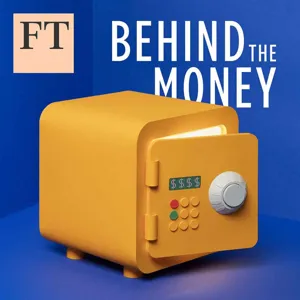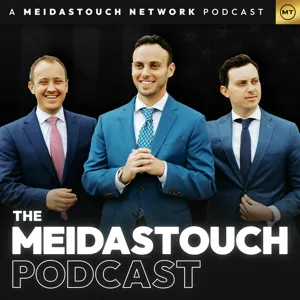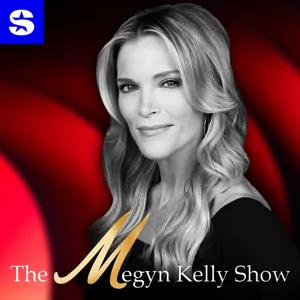Podcast Summary
The Role of Low Interest Rates in Silicon Valley Bank's Failure: The focus on tech industry depositors and investments in held-to-maturity securities during the low-interest-rate era led to Silicon Valley Bank's rapid growth and eventual failure when interest rates rose, illustrating the far-reaching impact of monetary policy on the economy and financial institutions.
The death of Silicon Valley Bank can be seen as a continuation of trends from the low interest rate economy of the past decade. According to Ben Carlson, co-host of the Animal Spirits podcast, Silicon Valley Bank's rapid growth in market cap from $11 billion in late 2019 to $44 billion by the end of 2021 was largely due to its focus on tech industry depositors and investments in held-to-maturity securities. This strategy, which benefited from the low-interest-rate environment, came under stress when interest rates began to rise, leading to a bank run and the eventual failure of the bank. Erica Ramirez, host of What About Your Friends, also touched on the role of low interest rates in shaping various industries and trends, from tech to crypto to entertainment streaming. The conversation, which took place on the Economic Roundtable, featured Michael Batnick and Ben Carlson discussing the implications of the Silicon Valley Bank failure for banking and regulation moving forward. Overall, the episode highlighted how the low-interest-rate environment of the past decade has shaped various aspects of the economy and society, and how its end can bring about unexpected challenges and changes.
Fed's low-interest-rates fueled a venture capital bubble contributing to Silicon Valley Bank's collapse: The collapse of Silicon Valley Bank was a complex issue with multiple contributing factors including the Fed's low-interest-rates, excessive deposits, and the bank's own investment decisions.
The collapse of Silicon Valley Bank was a complex issue with multiple contributing factors. The Fed's prolonged low-interest-rate policy fueled a venture capital bubble, leading to excessive deposits in the bank. However, the bank's own investment decisions in long-term securities also played a role in their downfall. The venture capital industry, regulators, auditors, and even the pandemic itself also contributed to the situation. Ultimately, it was a perfect storm of events that led to Silicon Valley Bank's demise. The Fed's role in allowing interest rates to stay low for too long was a significant factor, but it was not the sole cause. It's important to remember that the banking industry, like the economy as a whole, is influenced by a multitude of interconnected factors.
The Federal Reserve's role in the current economic instability: The financial crisis of the late 2000s led to the housing shortage and rise of consumer tech companies, with the Fed's role in lowering interest rates playing a significant part. However, bank executives' risky bets based on the assumption of low interest rates indefinitely also contributed to the recent crisis at Silicon Valley Bank.
The financial crisis of the late 2000s set off a chain reaction of events that led to the current economic instability, including the housing shortage and the rise of consumer tech companies. The Federal Reserve's role in lowering interest rates after the crisis played a significant part in enabling these trends. However, the blame for the recent crisis at Silicon Valley Bank cannot be solely placed on the Federal Reserve. The bank's executives, who were privy to the Fed's actions, made risky bets assuming interest rates would remain low indefinitely. The psychology of trust and hubris likely played a role in their decision-making. Ultimately, both the Federal Reserve and the bank executives share responsibility for the current economic turmoil.
Silicon Valley's Panic and Herd Mentality: The Silicon Valley Bank crisis was not only due to the bank's mismanagement, but also the panic and herd mentality of its concentrated customer base, which led to the largest bank run in history.
The Silicon Valley Bank crisis was not just a result of the bank's mismanagement of its treasury and mortgage-backed securities, but also the panic and herd mentality among its closely knit Silicon Valley customer base. The bank's senior leadership failed to reassure clients during the crisis, leading to a mass withdrawal of funds. The fact that the customer base was not diversified and heavily concentrated in the same industry and social media platforms accelerated the bank run. The low-interest-rate environment that inflated the value of tech companies may have also played a role in the crisis, but it was ultimately the bank's inability to calm the situation that led to the largest bank run in history.
The Role of Diversity in Corporate Governance Amidst Banking Crises: Historically, the success or failure of banks is not determined by their diversity, but by the swift response from regulatory bodies during crises.
The recent banking crisis involving Silicon Valley Bank has sparked debates about the role of diversity in corporate governance. Andy Kessler of The Wall Street Journal suggested that the bank's diversity initiatives may have distracted the board, leading to the crisis. However, it's important to note that historical evidence does not support the notion that banks run solely by white men have never failed. The banks' customers left due to fear of losing deposits beyond the FDIC insurance limit, leading to a bank run. The swift action taken by the Fed, Treasury, and FDIC to guarantee deposits was necessary to prevent a full-blown panic. While the political fallout of the crisis is still uncertain, the speedy response was crucial for maintaining financial stability and supporting regional banks, which play a significant role in lending to local businesses.
Protecting Depositors and Preventing Economic Chaos: The Federal Reserve's intervention to save Silicon Valley Bank was necessary to shield depositors and prevent potential economic turmoil, while ensuring accountability and minimizing impact on small businesses and individuals.
The recent intervention by the Federal Reserve to save Silicon Valley Bank was necessary to protect depositors and prevent potential economic chaos, despite some criticisms of moral hazard. The speed of technological advancements and financial crises has increased, making it crucial for regulators to act swiftly to mitigate risks. While some argue that this could encourage more risk-taking, the reality is that management was held accountable, and shareholders and bondholders bore the losses. The focus should be on ensuring that small businesses and individuals are not unduly burdened by banking instability, especially when they have crucial financial obligations like payroll. The moral hazard concern may not be as significant as some suggest, as the executives responsible for the failed bank no longer exist, and the precedent set could encourage similar actions in the future to safeguard depositors.
Banks should focus on essential services and let the Fed manage risk: The financial crisis of 2008 and potential crisis in 2023 show the need for increased regulation to prevent banks from becoming risky investment funds, protect the financial system, and ensure essential services.
The banking system needs a reevaluation of its role in society. Banks should focus on providing essential financial services, while managing risk should be the responsibility of the Federal Reserve. The 2008 financial crisis and the potential crisis in March 2023 highlight the need for increased regulation to prevent banks from acting as speculative investment funds that put society at risk. The deregulation of smaller banks in 2018 may have contributed to the current situation, as it allowed for less scrutiny and put some banks closer to the edge of financial instability. The answer to this issue seems to be more regulation, whether it be through increased liquidity reserves or other measures, to limit the risks banks can take and protect the critical infrastructure of the financial system.
Balancing Regulation, Competition, and Economic Growth in the Banking Sector: The failure of Silicon Valley Bank has sparked a debate about the role of regulators in preventing bank failures, the potential benefits and drawbacks of consolidating the banking sector, and the growing influence of tech companies in funding startups.
The failure of Silicon Valley Bank (SVB) has sparked a conversation about the role of regulators in identifying and preventing such failures, as well as the potential benefits and drawbacks of having a large number of regional banks in the US. The speakers expressed uncertainty about which regulatory agency should have flagged the issues at SVB earlier and who should have sounded the alarm. They also discussed the possibility of consolidating the banking sector to make regulation more manageable, but acknowledged that this could lead to fewer opportunities for smaller businesses and less competition in the industry. The speakers also noted that large tech companies like Microsoft and Alphabet might become the primary sources of funding for startups, potentially reducing the importance of smaller banks and increasing the power of these tech giants. Overall, the conversation highlighted the complexities of balancing regulation, competition, and economic growth in the banking sector.
Navigating Economic Uncertainty Amidst Crisis: Despite disagreement over future interest rates, the economic climate's complexity and uncertainty following the Silicon Valley Bank crisis may lead to deflationary forces.
The current economic climate is complex and uncertain, with the ongoing effects of the Silicon Valley Bank crisis adding an extra layer of instability to the already challenging task of determining monetary policy. The speaker expresses admiration for both startup culture and the historic R&D departments of large corporations, acknowledging that both have the capacity for innovation and risk-taking. However, they argue that large companies struggle more with operationalizing risky discoveries. Regarding the Federal Reserve, there is disagreement about the future of interest rates, with some believing that the crisis could lead to a pause in rate hikes and others insisting that inflation necessitates continued increases. Ultimately, the speaker suggests that the faith and trust in the financial system has been shaken, potentially leading to deflationary forces, but the full implications of this are uncertain. In summary, the economic landscape is marked by uncertainty, and the Fed faces a difficult decision regarding interest rates as the aftermath of the recent crisis unfolds.
Fed's response to recent banking crisis may lead to pause or slight rate hike: The Fed may pause or increase rates slightly due to recent banking crisis, decreasing housing and rent inflation, and potential government intervention preventing a larger financial catastrophe
The recent banking crisis, specifically the collapse of Silicon Valley Bank (SVB), may have served as a wake-up call for the Federal Reserve, leading to a potential pause or even a 0.25% interest rate hike instead of further increases. This decision could be influenced by the fact that housing and rent inflation are expected to continue decreasing, while core services inflation remains high. Additionally, there's a possibility that the government's swift response to the crisis may prevent a larger financial catastrophe and reduce the likelihood of a recession. However, the Fed may become more politically charged in the future, potentially being used as a tool for political gain. Ultimately, the future of the economy remains uncertain, but the recent events have shown the importance of government intervention during times of crisis.
New TikTok episode promotes 'Kingdom of the Apes': A ruthless ape king clashes with humans, a young ape rises to protect both species, set for release in IMAX on May 10th, secure tickets now for an epic, complex tale of ape-human relationships.
The new TikTok episode promotes the upcoming movie "Kingdom of the Apes" by 20th Century Studios. The film revolves around a ruthless king who is expanding his empire at the expense of the human race. Amidst this chaos, a young ape steps up to protect the future of apes and humans. The movie is set to release in IMAX on May 10th and in theaters everywhere. If you're interested in seeing this epic battle unfold, secure your tickets now. This film promises a thrilling narrative that explores the complex relationship between apes and humans, and the lengths one will go to protect their kingdom. Get ready for an unforgettable cinematic experience!






